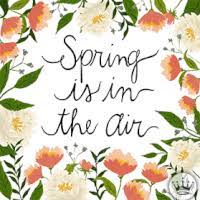APDG ~ Spring
Launch gallery slideshow

| Group: | Artistic Profile Deco Group ;-) |
| Swap Coordinator: | yvonne401 (contact) |
| Swap categories: | Seasonal Themed |
| Number of people in swap: | 6 |
| Location: | International |
| Type: | Type 1: Electronic |
| Last day to signup/drop: | March 15, 2023 |
| Date items must be sent by: | March 31, 2023 |
| Number of swap partners: | 3 |
| Description: | |
|
Did any of you know that March 20th is the first day of spring? Well, yes it is! One of the oldest known traditions for celebrating the Spring Equinox was the Chinese tradition of balancing eggs. In Chinese culture, and in many other cultures as well, eggs represent fertility and new life. Which is probably why the Chinese would try to balance them on their end for good luck. Spring, also known as springtime, is one of the four temperate seasons, succeeding winter and preceding summer. There are various technical definitions of spring, but local usage of the term varies according to local climate, cultures and customs. When it is spring in the Northern Hemisphere, it is autumn in the Southern Hemisphere and vice versa. At the spring (or vernal) equinox, days and nights are approximately twelve hours long, with daytime length increasing and nighttime length decreasing as the season progresses until the Summer Solstice in June (Northern Hemisphere) and December (Southern Hemisphere). Spring and "springtime" refer to the season, and also to ideas of rebirth, rejuvenation, renewal, resurrection and regrowth. Subtropical and tropical areas have climates better described in terms of other seasons, e.g. dry or wet, monsoonal or cyclonic. Cultures may have local names for seasons which have little equivalence to the terms originating in Europe. Meteorologists generally define four seasons in many climatic areas: spring, summer, autumn (fall), and winter. These are determined by the values of their average temperatures on a monthly basis, with each season lasting three months. The three warmest months are by definition summer, the three coldest months are winter, and the intervening gaps are spring and autumn. Meteorological spring can therefore, start on different dates in different regions. In the US and UK, spring months are March, April, and May. In Australia and New Zealand, spring begins on 22nd or 23rd of September and ends on 21 December. In Ireland, following the Irish calendar, spring is often defined as February, March, and April. In Sweden, meteorologists define the beginning of spring as the first occasion on which the average 24 hours temperature exceeds zero degrees Celsius for seven consecutive days, thus the date varies with latitude and elevation. In Brazil, spring months are September, October, November. In the Northern Hemisphere (e.g. Germany, the United States, Canada, and the UK), the astronomical vernal equinox (varying between 19 and 21 March) can be taken to mark the first day of spring with the summer solstice (around 21 June) marked as first day of summer. By solar reckoning, Spring is held to begin 1 February until the first day of Summer on May Day, with the summer solstice being marked as Midsummer instead of the beginning of Summer as with astronomical reckoning. In Persian culture the first day of spring is the first day of the first month (called Farvardin) which begins on 20 or 21 March. In the traditional Chinese calendar, the "spring" season (春) consists of the days between Lichun (3–5 February), taking Chunfen (20–22 March) as its midpoint, then ending at Lixia (5–7 May). Similarly, according to the Celtic tradition, which is based solely on daylight and the strength of the noon sun, spring begins in early February (near Imbolc or Candlemas) and continues until early May (Beltane). The spring season in India is culturally in the months of March and April, with an average temperature of approx 32 °C. Some people in India especially from Karnataka state celebrate their new year in spring, Ugadi. The beginning of spring is not always determined by fixed calendar dates. The phenological or ecological definition of spring relates to biological indicators, such as the blossoming of a range of plant species, the activities of animals, and the special smell of soil that has reached the temperature for micro flora to flourish. These indicators, along with the beginning of spring, vary according to the local climate and according to the specific weather of a particular year.[citation needed] In England, Wales and Northern Ireland, the National Trust runs the #BlossomWatch campaign, which encourages people to share images of blossom with one another, as an early indicator of the arrival of the season. Some ecologists divide the year into six seasons. In addition to spring, ecological reckoning identifies an earlier separate prevernal (early or pre-spring) season between the hibernal (winter) and vernal (spring) seasons. This is a time when only the hardiest flowers like the crocus are in bloom, sometimes while there is still some snowcover on the ground. Hundreds of sour cherry blooming in Extremadura, Spain, during spring. Late April in the Alps. At high elevations (or latitudes), spring is often the snowiest period of the year. During early spring, the axis of the Earth is increasing its tilt relative to the Sun, and the length of daylight rapidly increases for the relevant hemisphere. The hemisphere begins to warm significantly, causing new plant growth to "spring forth," giving the season its name. Any snow begins to melt, swelling streams with runoff and any frosts become less severe. In climates that have no snow, and rare frosts, air and ground temperatures increase more rapidly. Many flowering plants bloom at this time of year, in a long succession, sometimes beginning when snow is still on the ground and continuing into early summer. In normally snowless areas, "spring" may begin as early as February (Northern Hemisphere) or August (Southern Hemisphere), heralded by the blooming of deciduous magnolias, cherries, and quince. Many temperate areas have a dry spring, and wet autumn (fall), which brings about flowering in this season, more consistent with the need for water, as well as warmth. Subarctic areas may not experience "spring" at all until May. While spring is a result of the warmth caused by the changing orientation of the Earth's axis relative to the Sun, the weather in many parts of the world is affected by other, less predictable events. The rainfall in spring (or any season) follows trends more related to longer cycles—such as the solar cycle—or events created by ocean currents and ocean temperatures—for example, the El Niño effect and the Southern Oscillation Index. Unstable spring weather may occur more often when warm air begins to invade from lower latitudes, while cold air is still pushing from the Polar regions. Flooding is also most common in and near mountainous areas during this time of year, because of snow-melt which is accelerated by warm rains. In North America, Tornado Alley is most active at this time of year, especially since the Rocky Mountains prevent the surging hot and cold air masses from spreading eastward, and instead force them into direct conflict. Besides tornadoes, supercell thunderstorms can also produce dangerously large hail and very high winds, for which a severe thunderstorm warning or tornado warning is usually issued. Even more so than in winter, the jet streams play an important role in unstable and severe Northern Hemisphere weather in springtime. In recent decades, season creep has been observed, which means that many phenological signs of spring are occurring earlier in many regions by around two days per decade. Next onto our swap: Post THREE (3) pictures and/or gifs to each of your THREE (3) partner's profiles with the theme "Spring". The pictures that you choose may be the SAME OR DIFFERENT between all of your partners. Please choose pictures that you think THEY will enjoy! Only people with well filled out profiles may participate in this swap. I will be checking the night before partners get assigned. If you get 3 pictures from your partner on "Spring" you have to rate them a 5. The heart on the rating is for if you like what they sent. To leave a photo on someone's profile use this code ! [ ] ( Put image address here ) With NO spaces & paste the picture's link between the curved parentheses. Practice on your own profile first to be sure it looks good because you can easily delete there. Pick images that are size 300 wide or smaller to be sure they fit. I go to Google images to get my pictures. Hover over images to see their size because there will be some larger sizes there too. If you really like something click on it and go to the words SEARCH BY IMAGE and click on that. THEN go to the word SMALL and see if there is one 300 size. There are other tricks in the group thread; AN EASY way to get a small PIC from a BIG one;-) You can find moving pictures at http://giphy.com/ Please write the TITLE OF THE SWAP ON YOUR PROFILE DECO MESSAGE too! This makes it easier for partners that are in a lot of these swaps to rate it. Requirements:
Any problems, feel free to contact me. I want to thank @anrtist for allowing me to borrow SOME of her wording. | |
Discussion
Leave a Comment
You must be logged in to leave a comment. Click here to log in.
- Info:
- Home
- |
- About
- |
- Forum Rules
- |
- Terms of Use
- |
- Press
- |
- Advertising
- |
- Blog
- |
- Graphics & Stuff
- Help:
- New User Info
- |
- FAQ
- |
- Group Info
- |
- Glossary
- |
- Forums
- |
- |
- Contact Admin

